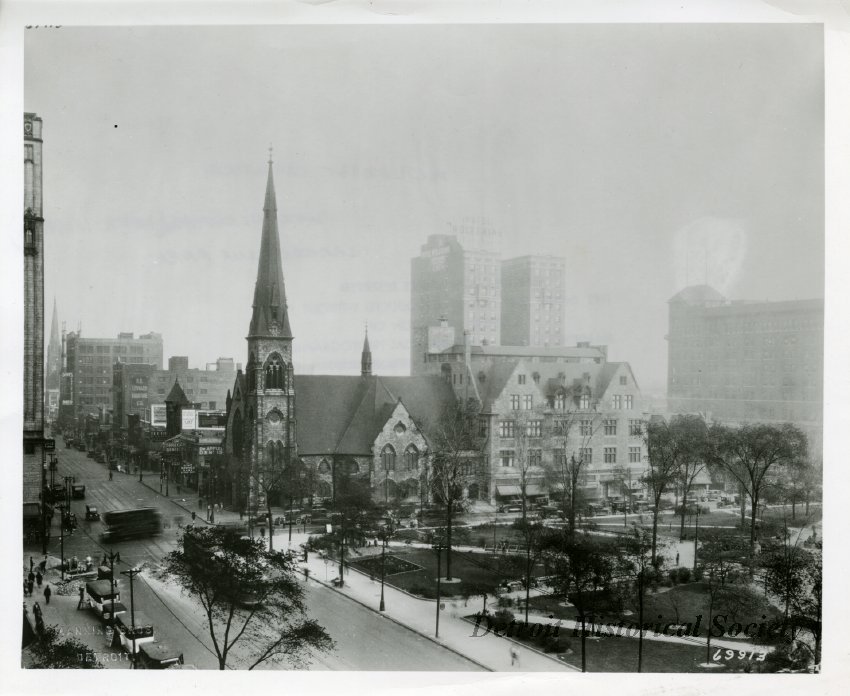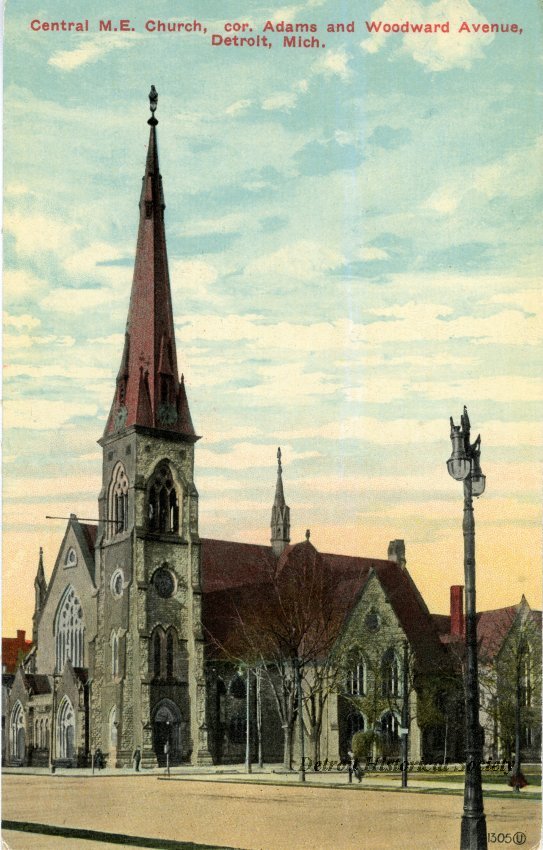Encyclopedia Of Detroit
Central United Methodist Church
The Rev. William Mitchell was sent to Detroit to form The First Methodist Episcopal Society of Michigan in 1810. Construction was completed on the congregation's first building in 1826, at the corner of Gratiot and Farmer Streets. This building was replaced in 1833 by a building at Woodward Avenue and Congress Street, and again in 1849 by a building at Woodward and State Street. When the nearby Congress Society Church burned down in 1863, the First Society and Congress Street Society merged and built a new church at Woodward and Adams Street and named it Central Methodist Church. Architect George W. Lloyd designed the Gothic Revival building. The cornerstone of Central Church's sanctuary was laid on July 3, 1866, and the church was dedicated the following year.
When Woodward Avenue was widened in 1936, several changes were made to reconfigure the church to accommodate the change. The church exterior is constructed of Ohio granite stones. The tower clock has four faces whose dials measure seven feet in diameter and chimes on every hour and half hour.
The interior wall surrounding the altar features a mural of the 12 Apostles painted by Detroit artists Elliott and David Skinner, who were members of Central. Thomas di Lorenzo painted the ceiling. The stained glass windows, installed in 1956, were made by the Henry Lee Willett Studios in Philadelphia.
Known on its historical marker as “The Conscience of a City”, the church has been at the forefront of a wide range of causes, from antiwar protests to civil rights. For 200 years Central United Methodist has endured as a Peace and Justice Church, committed to sustaining outreach programs in central Detroit.



